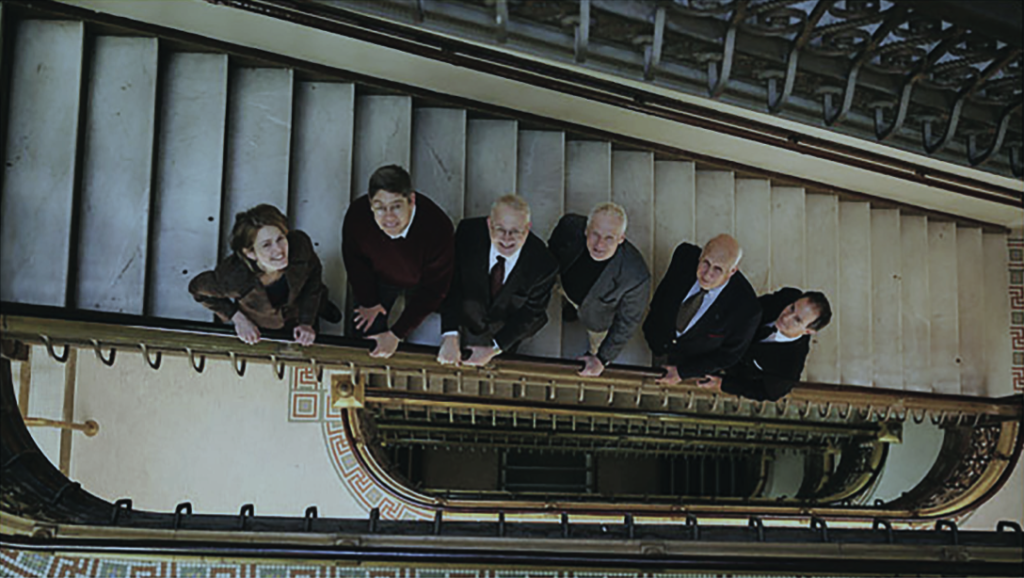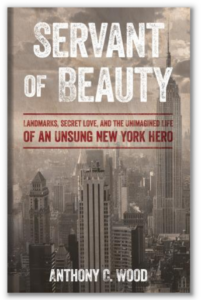“It Ain’t Over Till It’s Over” Preserving Your Preservation Legacy
December 31, 2020
By Anthony C. Wood, Archive Project Founder & Chair

If you accept that you will die (hopefully no time soon) and that the world left behind will continue without you, then it makes sense to contemplate your preservation legacy. As a preservationist, you might immediately assume that your legacy lies in the buildings and neighborhoods you helped preserve. Sorry to be the skunk at the garden party, but I suggest you might want to rethink that.
The places you think you have preserved will continue to be subject to ongoing change. Even those landmarked buildings and historic districts regulated by the New York City Landmarks Law will change over time. We all know that the price of preservation is constant vigilance. Who will provide that vigilance when you are gone? With some luck, it will be the next generations of preservationists. Since even public policy, like the Landmarks Law itself, can potentially be eroded, a robust preservation community must be in place to defend what has been accomplished. The cold reality is this: the future of each site you think you have preserved rests in the hands of future generations of preservationists.
How can you help ensure their future success once you have “gone to your reward”? Actually, the only way to truly sustain your preservation legacy is to continue your fight for preservation from the grave. (I know some of you are thinking, “What, no rest even when I’m dead?”). Unlikely as it sounds, there are many ways you can do this. Several of our recently departed preservation colleagues have provided us with wonderful examples. Both Jack Taylor and Joyce Matz included provisions in their respective wills to fund preservation efforts from their graves (well, technically, from the New York Community Trust). Already the Joyce Matz Fund at the Trust has supported preservation efforts to save the Music Room at the Frick, landmark the Demarest Building, and fight changes to important but not landmarked interior spaces at the New York Public Library. If you are in a position do so, follow their examples. Create a fund at the Trust or leave money to the preservation group of your choice (and there are plenty to choose from).
Eric Allison, Joyce Matz, Jack Taylor, Gene Norman, and Whitney “Mike” North Seymour, Jr. left something else of equal value to future generations of preservationists: their preservation wisdom as recorded through oral histories. The New York Preservation Archive Project was able to capture their compelling stories. Their narratives will inspire, instruct, and inform generations of future preservationists. Sadly, because of limited resources, too many preservation stories still go untold and uncaptured. Do not take your preservation story with you to your grave. Why not reach out to the preservation organizations in which you are involved and start a program of oral histories? The Archive Project has produced a manual on how to do it. We are here to help. Alternatively, fund our efforts to conduct more oral histories, including your own.
Jack and Joyce further insured their great preservation legacies by making arrangements to secure permanent homes for their preservation papers. Joyce’s public relations strategies, brilliantly displayed in such preservation battles as the fight to save City and Suburban Homes and the battle for St. Bart’s, are illuminated in her papers. Jack’s preservation strategies and the tactics he used in his fights for Luchow’s, the Dvořák House, and Ladies’ Mile come to life in his papers. They are there to provide inspiration to those today engaged in similar battles. Jack and Joyce’s papers at the New-York Historical Society join those of such other preservation luminaries as Margot Gayle and Harmon Goldstone. Jack left money in his will so that the papers he had not already donated (residing in his apartment and in its legendary shower stall — let the record show his apartment had two bathrooms) would be taken care of. Have you made arrangements for the future of your preservation papers? If not, we can help you. Don’t let their future be a trip to the dumpster.
Eric Allison further ensured his legacy by teaching preservation and writing about it. Capturing your preservation work in written case studies and speaking to young preservationists will reap many future benefits. Understandably, in the thick of a preservation battle, time and energy are limited. When it is over, you are either too exhausted to document that struggle or you are immediately thrust into the next battle (or both). Remember to take time out to capture the story of your preservation efforts before it is lost to history. Thanks to Kate Wood, all the key documents and materials related to the fight over 2 Columbus Circle were gathered together and now live on our website in a compendium. Win, lose, or draw, preservation battles contain lessons that should be passed on to future preservationists.
Did you start a preservation organization? Did you play a major role in one? Are you playing such a role now? Is that organization documenting its work? If not, it should. When the time comes to celebrate its 25th or 50th anniversary, it will be glad to have those records. Equally important, every good strategic planning session begins with a look at the organization’s history. James Baldwin had it right: “Know from whence you came. If you know whence you came, there are absolutely no limitations to where you can go.”
The true way to preserve your preservation legacy is to invest in the future of preservation. The cautionary words of the Pulitzer Prize-winning author Arthur M. Schlesinger, Jr. remind us why: “It is useful to remember that history is to the nation as memory is to the individual. As persons deprived of memory become disoriented and lost…so a nation denied a conception of the past will be disabled in dealing with its present and its future.” So too for the preservation movement.
Our departed colleagues in preservation have already shown us the way to preserve preservation’s history. Even if you believe you are going to live forever (good luck with that), it is always wise to have a Plan B. Follow the stellar examples set by Joyce, Eric, Jack, Gene, and Mike. Sadly, they are all gone and terribly missed, but at least their powerful legacies live on, and on, and on.




